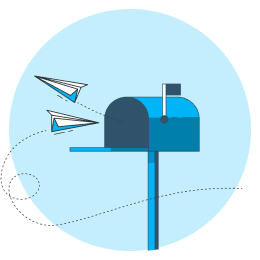12 Things to Remember While Moving
![banner banner]()
From the above moving checklist, 12 important things to do while moving are stated below:
1. Purge!
Reducing the number of items you have to pack, sort, and transport, organize and unpack is the easiest way to simplify your move into a new home. Take a very closer look at possessions by going through your current home from one room to the other.
Make a list of what you want to get rid of and what you want to keep. Make it a prominent point on your moving across country checklist to avoid carrying excess inventory around.
2. Raid the Pantry
There may be some things in your refrigerator-that are not worth moving, depending on the distance you are moving. Take inventory of foods that are hard to transport, the ones expiring soon, and frozen foods.
You can as well try to use up these food items before your moving date and avoid purchasing such items when you go shopping before the actual moving day. Add the items you will carry along to your moving packing list.
3. Decide on a Mover
One of the most important tasks listed in your moving across country checklist is finding a moving company. You will want to do some research on different moving companies in your area if you are going to pay for a mover.
Get moving quotes from at least five of them and schedule your moving date as early as possible. If you are moving long-distance, you can request for moving quote from our list of moving companies as they are great for handling any move.
Lining up your help from family and friends as soon as possible if you are relying on this source for help. Reservation of a moving truck from a local rental company should also be given consideration. You can as well get help moving or have someone assemble your furniture for you when needed.
4. Buy Packing Supplies
Packing your moving supplies ahead of time is a great idea. You will want to purchase bubble wraps, moving boxes, markers and packing tapes if you fail to keep an eye out for free moving boxes from local stores or on Craigslist.
5. Order Ahead
Order some essentials ahead of your move if you are relocating into your first place or you are expanding into a larger space. You will enjoy your first few nights in your new home when you plan ahead of the move.
6. Start Packing
The packing aspect is much easier if you did a good job of purging your belongings. When you pack ahead of time, you save yourself from the chaos associated with moving day. Make a moving packing checklist and follow it diligently.
Season clothes, garage, home, office, decorations, books, and other items that you won’t need some days before your move are to be the first items you pack. Essential kitchen items should be the last you pack while you work your way through the house until you get to the important items like toiletries and current wardrobe.
7. Schedule Time off Work
Ensure you get the time off work if you plan to move during the week. In order to get all settled into your new home, you might as well consider taking off the day after your move, even if you are relocating on the weekend.
8. Change your Utilities
Inform your utility companies of your relocation by placing a call to them. That will in some cases mean canceling service with your current utility company and setting up services with a new provider in your new locality.
You will surely want to have internet, trash service, gas, power, sewer, and water readily available when you move.
9. Change of Address
You can get into a lot of problems especially during tax season if you miss important mail after you move. File a change of address with the post office to make sure you don’t miss any of your mail. Add the core to your moving across country checklist and ensure that you check the box against it. You can as well do it online as it will only take a few minutes.
You must also ensure you make a proper change to your address with your credit card companies, insurance providers, banks, and other important institutions.
10. Change your Locks
You never know who has keys to your new home when relocating into a new home as previous homeowners, some of your neighbors, or even old occupants might have spare keys. Ensure you order a replacement lockset before the move-in day so you can replace the locks once you move into the new home.
11. Deep Cleaning
Before your belongings are moved in, your new home will be much easier to clean. If you have the chance, it is recommended that you schedule a deep cleaning before the moving day.
12. Deduct your Moving Expenses from your Taxes
Through your relocation process, ensure you save your receipts. At the end of the year, you can deduct your moving expenses from your taxes in some cases. This helps you to save hundreds or even thousands of dollars depending on the distance of your move. Both small items such as moving boxes and big-ticket items such as the cost of hiring a relocation company could be eligible for the deduction.








